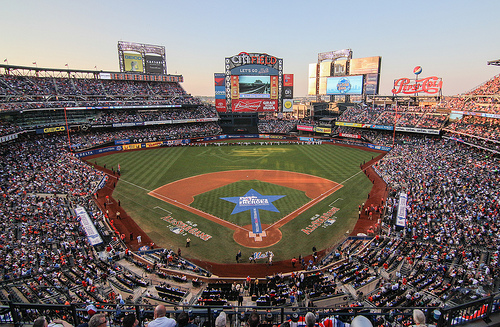By Daniel Stein-Sayles
Published: October 21, 2014
The home run chase between National League sluggers Mark McGwire and Sammy Sosa was one of the most exciting quests in Major League Baseball history. It caught the attention of the nation whose fans were enthralled with the mystical powers of the long ball.
Sorry, I just finished watching my VHS tape detailing the 1998 home run chase, and I may have gotten a little hyperbolic.
However, I know of at least one “fan” who remembers those days fondly. With the decision to rein in Citi Field’s unruly fences for the second time since the stadium opened in 2009, the New York Mets and COO Jeff Wilpon, have made the decision that the Mets, and their opponents, should hit for more power.
Sarcasm aside, home runs are an exciting part of the game; however, it is the winning and not the lack of power that bring fans to the stadium and butts in front of television screens. It is also a well-rounded baseball team, not a home run derby lineup, that wins games.
While the consequences of moving in the fences will not have catastrophic effects on the New York Mets in 2015 and beyond, the decision is a head-scratcher for a few reasons.
First, the Mets have amassed a wealth of pitching talent that has the potential to rival any other team across MLB, and the team is harming its most important asset by making this adjustment.
There are too many quality pitchers to list on the Mets’ roster and within their minor league system, but the Mets’ talent and depth on the mound is indisputable. The basis of their success over the next half-decade will be predicated on how well their pitching staff performs. So to even slightly inhibit what is by far the team’s greatest strength doesn’t quite make sense.
With the cavernous gaps and high walls of Citi Field, Mets’ pitchers had a home run to fly ball ratio of 9.9 percent in 2014, tying them for the tenth highest percentage in all of MLB. The team’s pitchers also allowed 71 home runs at Citi Field this season, which was the 14th-most home runs allowed in a home ballpark, according to the Wall Street Journal’s Jared Diamond.
Bringing in the fences will likely increase both of these figures, meaning more home runs and runs allowed by a pitching staff that will have to shine if the Mets are going to be successful.
Secondly, even if this move will almost certainly harm the pitching in some way or another, it will at least help Troy Tulowitzki, Jose Abreu, and Justin Upton hit for more power. Oh wait, they are not on the Mets… well that is awkward.
In 2014, the Mets had just three players hit double-digit home runs. Fundamentally, the Mets are not a power-hitting team, posting the ninth lowest isolated power in MLB this season.
Maybe the move by the Wilpons is the first in a line of cascading moves that will beef up the offense through free agency and trades. If that is the case, I will apologize, and the owners’ philosophies will be in line with the roster that general manager Sandy Alderson has constructed. However, if recent history is any indicator, a bevy of moves to reshape the Mets into an offensive club is not around the corner.
So while Lucas Duda and Curtis Granderson will hit a few more home runs next season and analysts will be able to show graphics of how many additional home runs they hit because the fences were moved in, the Mets’ offense, as currently constituted, does not look to benefit more than their pitching staff will be hurt.
Lastly, Major League Baseball is arguably in the dead-ball era part deux, where power is one of the league’s scarcest commodities. Power is certainly important in the modern game, as Daniel Meyer writes at Beyond the Box Score. Power hitters are worth more in the modern age than they have been in the past, so chasing power makes some sense, but unfortunately for the Mets, no matter how far they bring in the fences, they will not be successful in turning Daniel Murphy, Juan Lagares, or the majority of their roster into power hitters.
In the end, the structural adjustments to Citi Field will be one of the less consequential moves the team makes this offseason, but the move does elicit questions regarding what kind of team the Mets are trying to become, what the Wilpons are thinking—I know, we ask that one a lot—and ultimately why the fences are being brought in.
At the very least, this change will mean we get to see more of Juan Lagares leaping catches at the fence. That is something, I guess.



